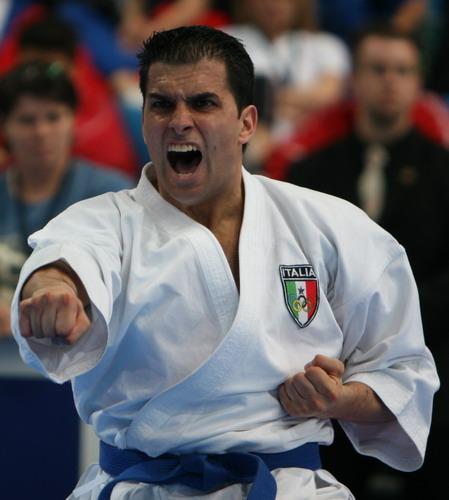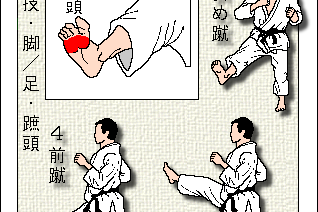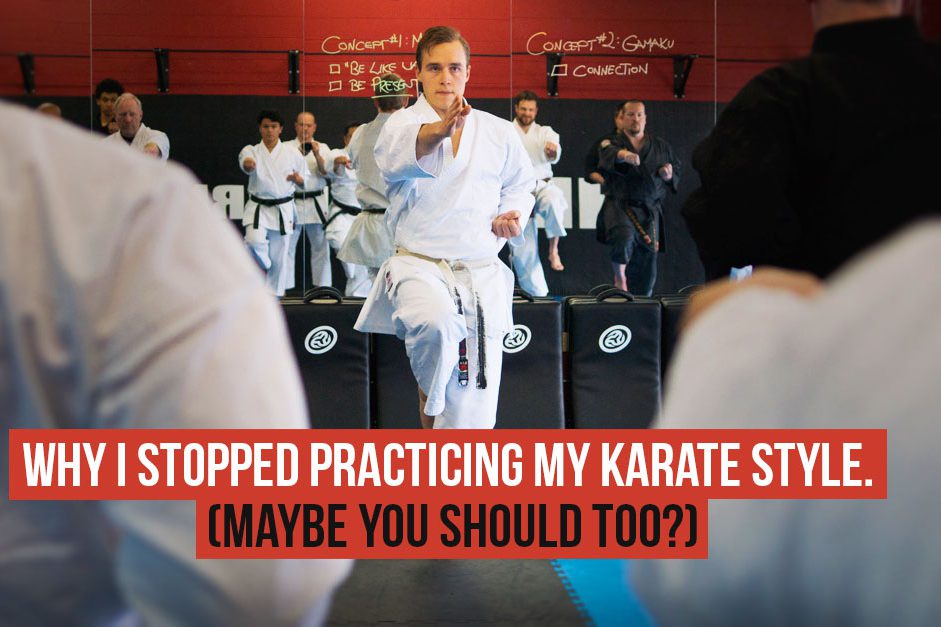Karate by itself is not a science.
It’s really not.
Even though people sometimes say it is, I don’t believe in that.
Karate is far too ambiguous to be.
However, what I do believe is that scientific principles can be succesfully applied to Karate, in various ways. In other words – though Karate is no science per se – a scientific approach can (and preferably should) be used when exploring it.
And believe me, that has been done.
But, strangely enough, many people don’t know that.
Or maybe they just don’t care?
So, to light that scientific bulb of Karate that we all have hidden somewhere in ourselves, I’ve decided to show you two interesting studies I’ve found that have been made about Karate.
Scientific studies, that is.
Let’s take a look:
“Load Analysis of Karate Kata Situational Training”
Presented at the 14th Annual Congress of the European College of Sport Science, in Oslo, Norveška, 24-27.07. 2009., this studie was conducted by a team of researchers (Bok, Daniel; Jukic, Igor; Vucetic, Vlatko) to look more closely at how the body reacts to performing kata.
Yes, kata!
Amazingly enough, a bunch of scientists deemed our “silly war-dances” worthy of research. And when you want to see the quick result of research, you simply look for the term “Abstract”.
So here’s the abstract of the study in question (edited slightly by me):
INTRODUCTION: Kata is a karate discipline comprised of basic karate techniques presenting offensive and the defensive actions. As kata is performed identically on training and competition, it is relatively easy to assess actual competition load measuring performances during situational training.
The goal of the research was to establish the level of intensity of 5 consecutive kata (Jion, KD [Kanku Dai], KS [Kanku Sho], GSS [Gojushih-sho], Unsu) performances with 5 min rest periods.
METHODS: A member of Croatian national kata team (29 yrs ; 179 cm ; 91 kg) performed incremental treadmill test (0, 5 km/h speed increase per minute, 1, 5% grade) for determination of VO2max and HRmax (50.8 mlO2/kg/min ; 191 bpm) and anaerobic threshold (AnT -46.4 mlO2/kg/min ; 186 bpm).
The level of intensity of 5 consecutive kata was measured through: heart rate (HR), blood lactate (LA ; Lactate Scout, USA) and oxygen uptake (VO2 ; COSMED, Quark K4, Italy).
RESULTS: The duration of each kata was 102s in average. HR before each 5 performance was 137, 150, 150, 124 and 137 bpm (73.1% HRmax, 75.1% HRAnT in avr) and after the kata performance 196, 197, 188, 193 and 189 bpm (100.1% HRmax, 103.6% HRAnT in avr). VO2 before each kata was 14.7, 13.4, 19.9, 12.5 and 9.3 mlO2/kg/min (27.5% VO2max, 30.1% VO2AnT in avr) and after the performance 39.1, 41.6, 33.7, 29.5 and 28.2 mlO2/kg/min (67.7% VO2max, 73.8 VO2AnT in avr). LA before each kata was 1.2, 12.6, 14.2, 14.3 and 16.8 mmol/l ; after kata 5.7, 13.2, 14.4, 14.4 and 13.0 mmol/l and 3 min after kata 11.3, 13.4, 14.0, 13.9 and 13.9 mmol/l.
DISCUSSION: HR after the kata performance indicates extremely high intensity of activity which goes even above the HRmax estimated on the treadmill test.
The HRpeak was lower in the last 3 katas, which can be attributed to the more economical performances and accumulated fatigue. Analysing the VO2 after each performance, which is always lower than after the previous one, it can be concluded that anaerobic metabolism is increasing with each performance.
It also indicates that 5 min break is not enough for complete recovery. This has also been supported by values of LA. Each consecutive kata has been performed with higher LA which also indicates insufficient recovery period and glicolitic character of the activity.
CONCLUSION: In comparison to already reported results, this case study presents higher physiological demands of kata performance. It is likely due to the highly trained subject examined and higher level of kata performances.
Kata performance can be considered as high intensity anaerobic activity with high lactate tolerance demands of an athlete. Situational training (5 katas with 5 min recovery) can be considered as extremely demanding system in which the anaerobic metabolism is increasing with each consecutive kata and the rest period is insufficient for full recovery.
Interesting, right?!
No.
Highly interesting!
At least to me. But then again, I’m a Karate nerd.
Anyhow, let’s leave that one, and move on to the next study which happens to focus on the relationship and comparison between kumite and kata:
“Energetics of karate (kata and kumite techniques) in top-level athletes”
Published in the European Journal of Applied Physiology, 27th of August 2009, by Doria, Veicsteinas, Limonta, Maggioni, Aschieri, Eusebi, Fano and Pietrangelo, this study gives us a lot of interesting data, like strength measurements, vertical jump measurements etc. for six world champions in kata and kumite.
That is, if you buy it for 45$.
As a pdf.
No thank you.
However, luckily, the abstract is free.
Here it is.
INTRODUCTION: Breath-by-breath O(2) uptake (VO2, L min(-1)) and blood lactate concentration were measured before, during exercise, and during recovery in six kata and six kumite karate World Champions performing a simulated competition.
VO2max, maximal anaerobic alactic, and lactic power were also assessed. The total energy cost (VO2TOT mL kg(-1) above resting) of each simulated competition was calculated and subdivided into aerobic, lactic, and alactic fractions.
RESULTS: Results showed that
(a) no differences between kata and kumite groups in VO2max, height of vertical jump, and Wingate test were found;
(b) VO2TOT were 87.8 +/- 6.6 and 82.3 +/- 12.3 mL kg(-1) in kata male and female with a performance time of 138 +/- 4 and 158 +/- 14 s, respectively; 189.0 +/- 14.6 mL kg(-1) in kumite male and 155.8 +/- 38.4 mL kg(-1) in kumite female with a predetermined performance time of 240 +/- 0 and 180 +/- 0 s, respectively;
(c) the metabolic power was significantly higher in kumite than in kata athletes (p < or = 0.05 in both gender);
(d) aerobic and anaerobic alactic sources, in percentage of the total, were significantly different between gender and disciplines (p < 0.05), while the lactic source was similar;
(e) HR ranged between 174 and 187 b min(-1) during simulated competition. In conclusion, kumite appears to require a much higher metabolic power than kata, being the energy source with the aerobic contribution predominant.
Also, a very interesting read.
Especially if you compare the test results to other martial arts (like MMA), or maybe your own!
(Hint: More interesting would be if somebody could perhaps “donate” this to me [in the name of science and Karate of course] so I could read the whole thing!)
Oh, and for those of you that don’t read scientific literature that much (no, I’m not talking about science fiction), “VO2” is the capacity of an individual’s body to transport and utilize oxygen.
“HR” means heart rate, and the “Wingate test” can be found here.
And if you don’t know the difference between aerobic and anaerobic exercise, then you’ve really got much to learn.
So, basically, this was what I wanted to share today!
I’ve got some other philosophical and socio-cultural studies done on Karate too, with very interesting results…
But that’s for the future.
Now, look at the two above abstracts that you just read and see if you can draw your own conclusions.
Maybe you need to step your game up?



8 Comments